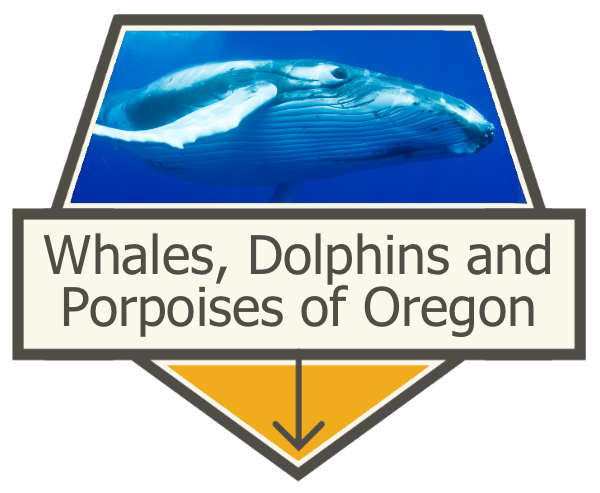EXPERIENCE > YOUTH ACTIVITIES
Whale watching has grown in popularity over the past few decades, especially as public awareness and sympathy for diminishing whale populations spread in the 1970s. Suddenly, migrating whales were not seen as something to be hunted and exploited for their raw resources, but a natural marvel to be watched, studied and appreciated.
The Oregon Coast is part of a long migration route for a variety of cetaceans, most notably the gray whales. During certain times of the year, you too may spot whales from the coast or from boats.
Whale watching has grown in popularity over the past few decades, especially as public awareness and sympathy for diminishing whale populations spread in the 1970s. Suddenly, migrating whales were not seen as something to be hunted and exploited for their raw resources, but a natural marvel to be watched, studied and appreciated.
The Oregon Coast is part of a long migration route for a variety of cetaceans, most notably the gray whales. During certain times of the year, you too may spot whales from the coast or from boats.
How Do I Spot a Whale?
Despite their tremendous size, finding whales off the Oregon coast can be a little like finding a needle in a haystack. But if you choose the right time of year, the right location and come prepared with the right equipment, you increase your chances of seeing cetaceans swimming close to shore. Here are some tips to help:
- Check ahead of time to see when whales are migrating through an area. There are several websites that can help with this process by providing spotting updates from other amateur naturalists and scientists.
- Get up high. Whales can actually be seen best from headlands with good elevation. Some popular whale watching sites on the Oregon Coast are Ecola State Park, Cape Meares, Cape Perpetua, Yaquina Head, Face Rock Scenic Viewpoint and Cape Sebastian.
- Go during early morning hours when the sea is calmer.
- Watch the weather forecast. If you go whale spotting on an overcast day you actually will have a better chance of seeing them because there will be less glare off the water.
- Scan the horizon for the “blow,” or the mist that spouts from the whale’s blowhole as it surfaces to breathe. Because the “blow” can shoot as high as twelve feet (3.65 m), you are much more likely to see this before you see the whale itself.
- Use a good pair of binoculars or a camera with a zoom lens to help with your whale spotting. Once you spot one whale, watch that area for more. Remember, sometimes whales travel in family groups known as “pods.”
Whale Watching from a Distance:
As with any recreational activity, sometimes enthusiasm can get the best of people. Although whale watching from boats has become an economic staple of coastal communities and has greatly advanced conservational awareness for these marine mammals, it can also play havoc with migrating animals. Noisy engines, exuberant crowds of people, and congested waterways can not only interfere with a whale’s internal navigation system but also scare off the food sources they’re trying to hunt. As with any wildlife viewing, it’s our responsibility to temper our excitement with some common sense and remember that the first rule is to observe… from a distance. See our feature Encountering Wildlife for more information on this topic.
Federal and state laws protect marine mammals by providing specific guidelines for boating near these animals. New regulations went into effect in 2011 which increased the buffer zone boaters must leave around whales so they don’t interfere with the animals’ natural behaviors. These rules apply to people on both motorized and non-motorized vessels (kayakers, for example).
If you head out onto the water to look for whales, make sure you understand and are following all of these important regulations.
Related Features: Let’s Speak Orca – Common Whale Behaviors You Can Spot At The Water’s Surface | Orca Reporting | Be Whale Wise | Whale Watching Spoken Here | Wildlife Spotting | Whales, Dolphins and Porpoises of Oregon
Federal and state laws protect marine mammals by providing specific guidelines for boating near these animals. New regulations went into effect in 2011 which increased the buffer zone boaters must leave around whales so they don’t interfere with the animals’ natural behaviors. These rules apply to people on both motorized and non-motorized vessels (kayakers, for example).
If you head out onto the water to look for whales, make sure you understand and are following all of these important regulations.
Related Features: Let’s Speak Orca – Common Whale Behaviors You Can Spot At The Water’s Surface | Orca Reporting | Be Whale Wise | Whale Watching Spoken Here | Wildlife Spotting | Whales, Dolphins and Porpoises of Oregon







